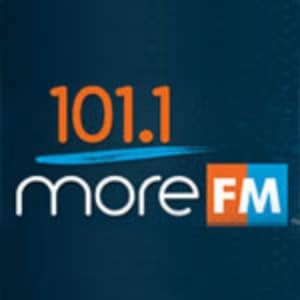By: Carter Wyckoff

Inside Radio
July 20, 2018
It’s the end of an era for WBEB (101.1), which has bucked the deregulation trend for decades, dominating Philadelphia radio as the only major standalone FM amid a sea of consolidators. With its sale to Entercom Communications, Jerry Lee—the “idea person” behind the risk-taking, odds-defying, widely copied station—spoke to Inside Radio about his more than 50 years as WBEB’s architect.
While Entercom is paying $57.5 million to a Chicago-based trust company connected to billionaire Sam Zell to acquire AC “More FM” WBEB, Lee’s original business partner, David Kurtz, got the station for free. “In 1963 nobody wanted an FM station, Lee says. “All you had to do was knock on the [FCC’s] door and say, give me one of those.” Three years after signing on beautiful music WDVR (for “Delaware Valley Radio”), “we had a larger AQH than any FM in New York, L.A. or Chicago. By 1968 our revenue was triple that of any FM in those three markets,” he boasts. Yet the station’s architect had no equity in the operation. So in 1969, Kurtz agreed to give Lee a 49.99% stake if he met certain objectives, which he accomplished handily by the early 1970s.
From the get-go, Lee was unafraid to experiment and invest generously in research, which became the station’s hallmark and a cornerstone of its enduring success. He hired acclaimed researcher Bill Moyes and the two formed a strategic brain-trust that tested just about everything the station did. “We took chances and experimented with things and relied on research to the nth degree,” Lee says. He posits, “We did more research than any radio station in the country.”
Liberal investment in station marketing became another foundational element. In 1968, Lee and Kurtz spent lavishly on what Lee claims was the first professionally produced TV commercial for a radio station. The spot, which featured a Rolls Royce, a Jaguar and two attractive drivers, created such buzz that listeners would call the station to ask when it would air. “A very masculine Italian actor is driving a Rolls Royce down this sunlit lane and comes to a stop light and this beautiful blonde in an XKE Jaguar pulls up alongside,” explains Lee, who is very fond of cars. “He rolls down his window to put a make on her and she’s playing rock n’roll music. [WDVR was all instrumental beautiful music at the time.] So he rolls up his window, cuts her off and the announcer comes on and says, ‘There’s a difference between classy and class. If you listen to WDVR, you know the difference.” The spot would be mentioned by listeners in focus groups for the next 10 years.
EZ Listening to Top-Rated AC
In 1981, WDVR switched to new calls WEAZ to reflect its “Easy Listening” position. Slowly integrating vocals into the music mix, the outlet catapulted to the market’s top-rated station by 1984. It made it to the pinnacle in large part by targeting listeners at work and a grand – and expensive – Lee scheme in the mid-‘80s helped cement that position: Lee and Kurtz ponied up the cash for 50,000 deluxe rosewood cabinet radios with 6-inch speakers to be manufactured that could only receive 101.1 FM. The station gave them for free to retailers in the region. “It took an incredible investment but it did a lot to grow the radio station,” Lee says. “David was an incredible partner who allowed me to do what I thought we needed to do.”
In 1988, WEAZ completed its transition to soft AC and then to mainstream AC in 1993, rebranded as “B101” with new calls WBEB.
When President Bill Clinton signed the Telecom Act into law in 1996, ushering in a wave of unprecedented consolidation that would dramatically reshape the radio landscape, some believed WBEB wouldn’t survive as a standalone. Kurtz and Lee resisted big dollar offers to sell and proved the naysayers wrong. “I knew that everyone would scramble to bulk up and buy a lot of stations that would require a lot of financing—and the first thing they would cut is their marketing budget, which they did,” Lee recalls. “So I increased my advertising over a three-year period from $1 million to $3.5 million a year. And I buried my competitors.”
After Kurtz died in 2005, Lee purchased the other half of the station from his partner’s estate and owned 100% of WBEB. But Lee overpaid and with loans coming due, WBEB was purchased in 2015 by a group led by Sam Zell, known for backing Jacor Communications and buying Tribune. Lee remained chairman of the board of Jerry Lee Broadcasting and kept the ideas coming.
Now as the station is handed off to radio’s second largest company, joining a cluster with some of the market’s biggest radio brands, like news KYW, sports WIP-FM and classic hits WOGL, Lee believes his baby is in good hands. “The frequency of 101.1 is so embedded in the market. We’re No. 1 across the board because we’re such a part of the fabric. You’d have to do something really bad to screw it up and they won’t,” he says. “I have a lot of confidence in [Entercom CEO] David Field – he’s one of the best operators in the country.”
And Lee won’t be going quietly into the night. He says he continues to work “feverishly” on his engaging commercials business and won’t rest until the quality of radio spot creative improves industrywide.